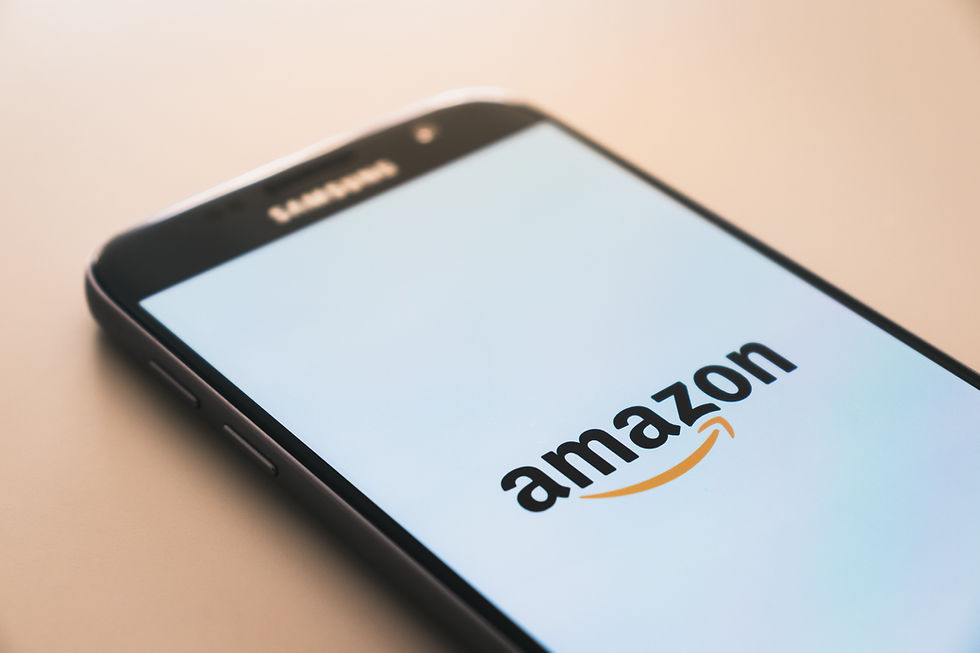The Rise of Amazon
- Aadil Khan
- Aug 4, 2022
- 3 min read
Humble Beginnings
In 1994, Jeff Bezos left his position at an investment bank to create a virtual bookstore in Seattle, Washington. Bezos began constructing the software for the site, which he called Amazon.com, in his garage with a handful of staff. Its first virtual book was published in 1995. After reading a forecast on the future of the Internet that predicted yearly web commerce growth of 2,300%, Bezos compiled a list of 20 items that could be offered online. He whittled the list down to the five most promising products, which he identified as compact discs, computer hardware, computer software, videos, and books. Because of the high global demand for literature, the low unit price of books, and the vast number of titles available in print, Bezos eventually decided that his new company would sell books online. Within two months, Amazon's sales had surged to $20,000 per week, selling to all 50 states and over 45 countries.

Struggle and Success
It wasn't all sunshine and rainbows for Amazon, as they were sued by many companies like Walmart for “infringing on their trade secrets.” Additionally, skeptics argued that Amazon would lose in the marketplace against established bookstores like Barnes and Nobles. Combined with the lack of company profits till the 4th quarter of 2001, many believed Amazon wouldn't survive and had lost all its potential.
Despite these arguments, Bezos rejected critics for underestimating the Internet's tremendous growth potential. He believed that in order to flourish as an internet store, a company must "Get Big Fast," a motto he had printed on employee T-shirts. In fact, Amazon.com grew quickly, achieving 180,000 customers by December 1996, following its first full year of operation, and one million customers less than a year later in October 1997. Its revenue rose from $15.7 million in 1996 to $148 million in 1997, then to $610 million in 1998. The success of Amazon.com prompted its founder to earn Time magazine's 1999 Person of the Year.
In 1999, Amazon became the world's largest online sales platform by selling consumer electronics, video games, software, home-improvement items, toys and games, and so much more. In order to maintain this aggressive growth, Amazon went public raising 54 million on the NASDAQ market. Many consumers enjoyed amazon's customer service and loyalty, which inevitably helped it grow into what it is known as today.

Branching out
In the next decade, from 2000 to 2010, Amazon started to broaden their services. Amazon Web Services (AWS) was created in 2002, offering data on Internet traffic patterns, website popularity, and other statistics to developers and marketers. Amazon.com began selling its own Kindle e-readers in 2007, reviving the e-book market. AmazonEncore, a publishing line dedicated to popular self-published and out-of-print books, was launched in 2009. It also allowed users to publish their own e-books. Its e-book ambitions led to the establishment of Amazon Publishing in 2011, with the intention of developing and publishing its own titles. That year, Amazon.com reported that Kindle e-books had surpassed all printed books in sales. While many book publishers continue to get significant revenue from Amazon.com sales, the corporation is no longer seen by publishers as merely another bookstore. It is now a big contender in their field. The Kindle Fire, a related low-cost tablet computer, was launched in 2011, and by 2012, the Kindle Fire was projected to account for half of all tablets sold that used Google's Android mobile operating system.
Rapid Growth
In 2012, Amazon acquired Kiva systems for 753 million for automated robotic operations in warehouses. In 2014, Amazon bought Twitch, an online streaming platform, for $970 million as an opportunity to get into the gaming industry. In 2017, they bought Whole Foods for $13.7 Billion, allowing home delivery orders to be placed and fulfilled within two hours in more than 100 cities. In 2018, Amazon acquired Ring for 970 million dollars which revolutionized the doorbell industry and allowed them to expand into the home security device industry. Most recently, they bought MGM studios for 8.5 billion dollars which helped them compete against other streaming competitors like Disney and Netflix.
It's safe to say that Amazon isn't going anywhere. They have become an industry leader in its many industries that it competes in. Amazon has provided more jobs in the past decade than any other US based company and they have no intention of slowing down.





Comments